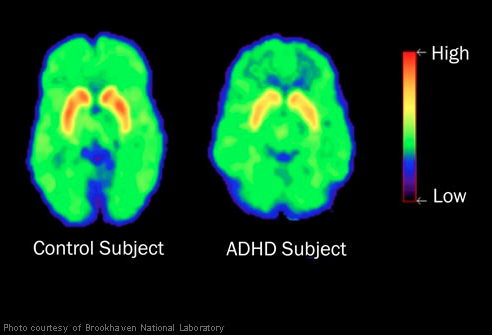Besides their good looks and the assortment of talents, what do Ryan Gosling, Woody Harrelson, Adam Levin, and Jim Caviezel have in common?
Well, although La La Land, the 2016 motion picture starring Ryan Gosling and Emma Stone delighted many audiences and brought home Oscar Awards in six categories, in our trivia quiz, it doesn’t get the cake. The answer is also not that they are all male actors, because in spite of his many talents, Adam Levin is a musician and not a Hollywood actor (yet). The answer is Attention Deficit Hyperactivity Disorder. Yes, all of the individuals listed above have received a formal diagnosis of ADHD or ADD at some point in their lives.
In an era where psychological disorders are unfortunately still not a topic at the dinner table because of the various mental health care barriers such as limited availability and affordability of mental health care services, insufficient mental health care policies, lack of education about mental illness, and stigma, it is encouraging to know that successful public figures, are paving the way for this vicious trend to change. Mental disorders have been a true silent killer for decades also because they are not immediately fatal. Millions of people in the US alone are suffering in silence because our Individualistic society, encourages independence over asking for help. In developed countries, the treatment gap (the percentage of individuals who need mental health care but do not receive treatment) ranges from 44% to 70%). According to Unite for Sight, The World Health Organization cites a global lack of comprehensive mental health policies, which are crucial for implementing and coordinating mental health care services, as a key barrier to public access to mental health care. Among countries with mental health care policies in place, approximately 40% have not been revised since 1990 and do not address recent developments in mental health care. Furthermore, 22% of countries do not have laws that offer legal protection of the human and civil rights of people with mental illnesses. Let’s face it, if someone, especially an adult is already feeling helpless because their symptoms are inexplicable and are effecting their daily lives, including their employment, making them feel alone and different, they are already at odds with getting the attention they need. Now add to that the myriad of hurdles they are faced with as mentioned above and what you have is a lifetime of struggles, possible isolation and unmet potentials. Fortunately, in the U.S. there are a number of federal laws that protect the rights of people with disabilities, including mental health illnesses. The main one is the Americans with Disabilities Act (ADA).
ADHD, one such psychological disorder is a common neurobiological condition, which is usually supposed to be diagnosed in childhood. Originally it was thought people would “outgrow” the condition as adults. However, 60% to 90% of adults continue to experience symptoms (Barkley et al; de Graaf et al). Both Emotion Management one of the four dimensions of Emotional Intelligence which aids in reading emotions in yourself and in others, and managing them effectively, as well as Executive Functioning (collectively referred to as executive function and cognitive control) are a set of cognitive processes, including attentional control, inhibitory control, working memory, and cognitive flexibility, as well as reasoning, problem solving, and planning, that are necessary for the cognitive control of behavior. The selection and successfully monitoring of behaviors that facilitate the attainment of chosen goals are thought to be functions impaired by Attention Deficit Hyperactivity Disorder both in children and in adults and there various severe consequences to deficits in EI and Executive Functioning that negatively impact individuals including those with ADD or ADHD.
Diagnosis of ADHD or children’s Attention Deficit Hyperactivity Disorder are now certainly more frequently noted, due hugely in part to the role of government funding of school support programs, involved parenting and teacher education. However, this wasn’t always the case. In some children, now adults, especially those belonging to the Xer generation , this diagnosis was delayed or perhaps never given. There are several explanations for this. One explanation is that especially in Generation Xers (those born between 1965-1980), because there was an increase in dual income parents, the prevalence of Latch Key Kids, or children who were raised with less adult supervision than prior generations increased, which meant psychological disorder like ADHD in children 5-13 were less likely to be noticed by parents at that time. Then of course, in adulthood years, an ADD diagnosis can easily be missed due to gender, and or comorbid depression, anxiety, substance abuse disorders, and/or other psychiatric conditions.
Although ADD is still thought of as something that affects only men and boys, women are just as likely as men to have ADD. In fact, the latest research suggests that ADD causes women even greater emotional turmoil than their male counterparts. Consequently, ADD women are more likely to go undiagnosed (or misdiagnosed), and hence less likely to receive the appropriate treatment.
According to Dr. Fred Reimherr, M.D., director of the University of Utah Mood Disorders Clinic, ADD has a disproportionate impact on women. “The women had a much more frequent history of having been diagnosed with other emotionally based psychiatric illnesses, such as depression or anxiety. A woman might come in presenting emotional symptoms, and the ADD that’s underneath might be missed.”
Under-diagnosis of ADD in women could be having its roots in social norms in childhood. Because girls generally tend to try harder than their male counterparts, if they have symptoms of ADD, they will try to compensate for and cover them up. To keep up their grades, girls are often more willing to put in extra hours to study or to turn to others for help.
In addition, girls are more likely to be “people pleasers,” doing all they can to fit in, even when they feel they are “different.”
Overall, whether male or female, according to the Mayo Clinic, “Signs and symptoms of ADHD in adults can be hard to spot and no single test can confirm the diagnosis”. Impulsivity, distractibility, disorganization, restlessness, emotional outbursts; in children, these symptoms would be recognized by a teacher, and the parents would be referred to a medical professional for an attention-deficit/hyperactivity disorder (ADHD) evaluation. However, in adults, these symptoms may lead to people getting fired, getting divorced, or simply being labeled as lazy or irrationally angry. Many people with ADHD struggle with controlling the outcome of their actions and then have to face the consequences.
A recent World Health Organization (WHO) study estimated that 3% to 4% of adults worldwide have ADHD, with a rate of 4.5% in the United States (de Graaf et al, 2008). Of those, a large number—possibly 8 million to 10 million—are undiagnosed. Millions more do not receive appropriate treatment (Barkley, Murphy, & Fischer, 2008). The WHO study also reported that adults with ADHD miss an average of more than three weeks in workplace productivity yearly. The Centers for Disease Control and Prevention (2009) has estimated the costs of such work loss to be at $3.7 billion.
Problems associated with ADD most commonly occur during college years, at work, and in interpersonal relationships. ADHD usually interferes with the individual’s sense of self-control and sense of self-efficacy, thereby affecting his or her ability to establish and follow-through on reasonable goals, deadlines and promises. Small tasks considered simple to others, could be a cause for problems in adults with ADD that can lead to bigger problems in various life domains. Examples include procrastination, poor time-management, disorganization with space, thought formation, and even speaking, distractibility, and poor emotional regulation.
At the Center for Work Life Within Dr. Namin’s practice, many work-life issues are intertwined. An employee may be self-referred because he or she feels overwhelmed with stress, or burned-out, or because they don’t feel productive anymore. Or they may be referred by their employer, because in spite of their incredible knowledge, skills and proficiencies of their specific jobs, their co-workers or worst yet, their direct reports don’t feel they have the interpersonal skills necessary for leadership. During initial discussions, it usually becomes apparent, that they have s messy work area, trouble initiating tasks at home or starting and finishing projects at home and/or work, chronic lateness, underestimating the time needed to complete tasks, an inability to focus and listen during discussions whether at home or at work, and forgetting or missing deadlines or previous engagements.
However, in addition to these common symptoms of distractibility and impulsivity, ADD symptoms may manifest as problems in impaired ability to plan and prioritize tasks and jumping from one task to another and not completing either. These are what’s called executive functioning abilities.
Employees with ADHD are rated lower on work performance, are more prone to receiving disciplinary notices from supervisors, are paid lower salaries, and produce lower quality work (Barkley et al; Ramsay, 2010). The truth is that Adult ADHD is rarely recognized in the workplace, and those with the condition may be labeled as anti-social, or poor performing employees or horrible bosses, that are at best tolerated, and at worst terminated, depending what their skill-sets are, making career advancement or even maintaining consistent employment difficult. According to the BMJ Journal, ADHD was associated with a statistically significant 22.1 annual days of excess lost role performance compared to otherwise similar respondents without ADHD.
Considering we spend so many of our days and waking hours at work, our perceptions of life are hugely related to not only our performance but also our relationships at work. In a study measuring the effects of ADHD on perceptions of life satisfaction, among males, poor social functioning was the best predictor of dissatisfaction with life, whereas among females it was poor emotional control. Both ADHD symptoms and associated problems are significantly related to poorer satisfaction with life.
It may be interesting but not surprising, when a top-performing employee or C-level executive with a tenure of 8-10 years is referred to the Center for Work Life for Interpersonal disconnection, or lack of empathy, or following. It is ironic that some adults with undiagnosed ADD may be viewed as hard-working or top performing, due to what is called hyper-focusing. This is where the undiagnosed individual over the years, has built a coping mechanism for distraction by self-training to be so focused, that they become overly absorbed in one task, causing the individual to become oblivious to his or her surroundings, losing track of time and neglecting other duties or more importantly significant members of their lives, such as supervisors, spouses, co-workers, children, etc. Hyperfocus at work may be viewed as productivity but in the overall scheme of life, if left unmanaged, can lead to social isolation, being perceived as a workaholic and a self-centered, emotion-less individual. We will come back to this specific topic later.
So why are many ADHD diagnosis given to males than females? In a study published in the MBJ Journal, ADHD was found to be more common among males than females and less common among professionals than other workers. These findings of course are parallel to the disparity in how ADD is diagnosed as mentioned above. In short, because ADHD symptoms in adults, include low self-esteem, memory problems, lack of motivation, difficulties with emotion regulation which depending on personal background display differently in genders; they can manifest as agitation or a short temper, depression, or reckless and risk taking behaviors. In other words, adult ADD can cause a major havoc, silently in all realms and facets of a person’s life and in both genders.
In our conflict resolution practice, we have noted many clients who are directly impacted by the pressures of ADD on their marriage or relationship with a partner. The complaint of the non-ADD partner, that at the dinner table, their partner is either “playing with their device” or is “somewhere in la la land”. A partner with ADD may be forgetful, disorganized and distracted, and failing to meet their everyday responsibilities or obligations. They may not be attentive to expressions of feelings, or not be able to communicate effectively because they missed signs of discomfort, or frustration from their surroundings. They may be having difficulties with coping with work stress and hence not able to separate their work and life. They may be the overreacting partner or, they may feel the other partner is overreacting because they don’t realize they have missed the cues the non-ADD partner has been giving them prior to the escalation. Worst yet, the ADD partner may seek risk-taking behaviors that could be considered a huge breach of trust in the relationship. Over time, the non-ADD partner may interpret the ADD partner’s failure to carry out commitments, or their poor communication, lack of empathy, or conversely emotional outbursts as evidence that the ADD partner doesn’t care or love them. Unfortunately, without treatment, all other attempts to resolve the issues may fail, because the ADD partner “keeps making the same mistakes”. Consequentially and eventually, the partner may burn out and the marriage may fail.
In the a study which researched the ADHD and coping and stressor reactivity in University students, ADHD and ODD symptoms were significantly related to a number of stressors and different patterns of coping strategies. University students with symptoms of both ADHD and ODD display a different pattern of stressors and different patterns of coping than those with symptoms of ADHD only.
In the article, The Impact of ADHD on Marriage, the authors describe several measures to help aid the diagnosis and interventions process.
Furthermore, in studying martial adjustment and perceptions of marital dysfunction, a study revealed that married adults with ADHD reported poorer overall marital adjustment on the Dyadic Adjustment Scale (DAS; Spanier, 1989) and more family dysfunction on the Family Assessment Device (FAD; Eptein, Baldwin, & Bishop, 1983) than control adults.
Moreover, in yet another study, adults with ADHD displayed greater self-reported psychological maladjustment, more driving risks (speeding violations), and more frequent changes in employment. Significantly more ADHD adults had experienced a suspension of their driver license, had performed poorly, quit, or been fired from their job, and had a history of poorer educational performance and more frequent school disciplinary actions against them than adults without ADHD. Multiple marriages were more likely in the ADHD group as well.
According to the Journal of Psychopathology and Behavioral Assessment, in studying The Nature of Executive Function (EF) Deficits in Daily Life Activities in Adults with ADHD and Their Relationship to Performance on EF Tests, It was found that the ADHD group had more severe EF ratings than did the Clinical group and Community control groups on all 5 scales using both self and other-reported versions. The EF ratings were more highly associated with measures of deviant behavior (antisocial acts, crime diversity, negative driving outcomes) than the EF tests, most of which were unrelated to such behavior.
It is a very sad thought to imagine the potential of a human being is limited because of lack of information, or misinformation. There is a strong feeling of loss and despair while the individual is grappling with what seems like a strong hold on their ability to make strides. They are constantly remorseful, yet helpless when they are faced with tasks that seem so easy for others and their confidence ever so flighty. On the other hand, there is nothing more frustrating than a co-worker, parent, a teacher, a supervisor or a spouse feeling that they are at their rope’s end because they are at odds with what is to be done when there is the respect and/or love they feel for an individual, which otherwise is so full of promise.
But it doesn’t have to be this way. Among many psychological disorders, ADD is among the ones highly researched and various forms of therapy are available. It is neither wise nor healthy for an individual whether a child or an adult to be just in therapy or just on medication for ADHD. It is instead, recommended that a structured pragmatic, psycho-educative approach combining medication and cognitive-behavioral approaches be utilized. The aim will be the development of specific self-management skills, within a cognitive behavioral framework. Career, team, family, marital and group therapies are also discussed. Life is the hope of living one’s dream each and everyday, but it doesn’t mean it has to be lived in La La Land. Furthermore, the EEOC laws governing disabilities, aka ADA, employers are now bounded by law to provide reasonable accommadations to employees that make them aware of their ADD. It is a big controversy to tell or not to tell. But in an era where mobility, ambition, and individualism are the norm, one has to weight the cost and benefits of privacy vs. trust, growth vs. tolerance, etc. It is our hope that the laws of our country become even more empowering for workers in the near future, so that individual talents can truly and completely color with rainbows the immense possibilities.






